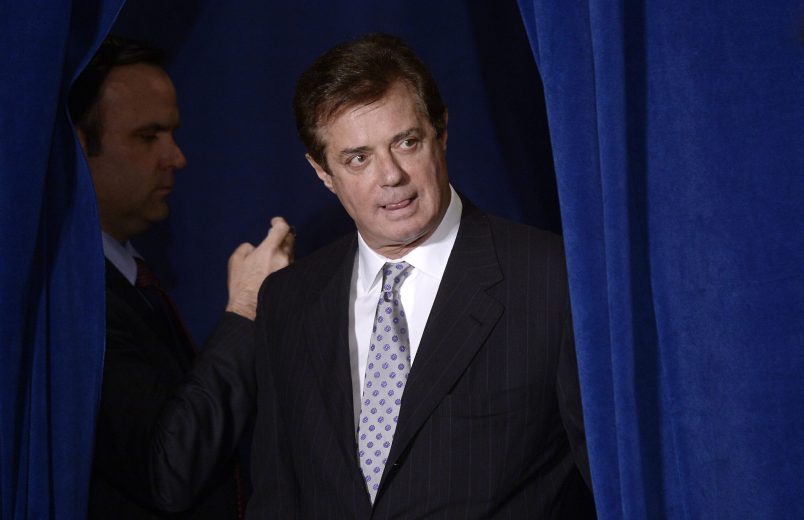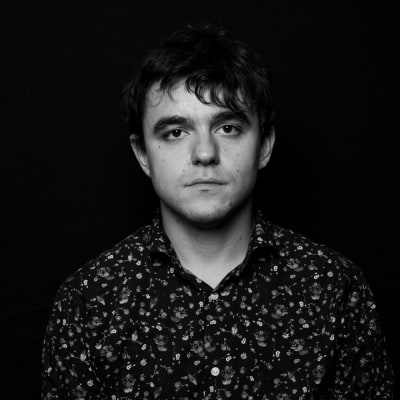For years, former Trump campaign chairman Paul Manafort worked in Ukraine for people who have now either fled to Russia, or been accused of supporting it.
Manafort, now staging a comeback via a book deal, worked in Ukraine from 2005 up through the country’s 2014 revolution and afterwards.
Russia’s invasion is a violent example of the Kremlin’s longstanding policy: reverse Ukraine’s decades-long shift towards the West and force the country towards Russia.
“I ran four parliamentary elections and a presidential campaign there, I got to know the country extremely well,” the former Trump campaign chairman told a radio host this month. “I think I know it better than Putin does right now.”
As a political consultant for the Party of Regions, Manafort helped elect a political movement that was at least in part a tool of those aims. Manafort spent a lot of time whitewashing his client’s abuses in a quixotic and partly successful bid to persuade the European Union to sign an association agreement with Ukraine.
It was an effort that was, in a sense, pro-Western: Ukraine would sign a document allowing closer trade ties with Europe. In another sense, Manafort’s work asked the West to favor image over substance: overlook the havoc that Manafort’s client, Viktor Yanukovych, was wreaking on Ukrainian society in support of the deal.
Under pressure from Putin in 2014, Yanukovych yanked his support for the deal, sparking protests that led to his eventual overthrow and to the Russian decision to annex Crimea and foment a separatist movement in the east.
Several of Manafort’s associates and clients from that time have now either been sanctioned by the U.S. for allegedly working to establish a pro-Russian, post-invasion puppet state or, like Yanukovych, themselves fled to Russia after 2014.
Much of the information we have comes from federal criminal investigations, a probe by the Senate Intelligence Committee, and accounts from people who worked closely with Manafort in Ukraine. What they reveal is a man who was willing to support politicians in Ukraine who would later throw their lot in with Moscow, working to get them elected while also overseeing initiatives aimed at convincing Europe to overlook instances of wrongdoing by his clients in favor of signing a lucrative trade deal.
Manafort entered Ukrainian politics in 2005, working out of a luxury hotel in downtown Donetsk, an east Ukrainian steel mill city, owned by his patron, Ukrainian oligarch Rinat Akhmetov.
It was a watershed moment in the country’s politics: the previous presidential elections saw the initial victor, Viktor Yanukovych from the Party of Reginos, lose amid mass protests over fraud in the vote count.
That event, known as the Orange Revolution, was a shock to Yanukovych, Ukraine’s political establishment, and to the Kremlin. Vladimir Putin, who had campaigned with Yanukovych one week before the election, would call it and other “color revolutions” a “well-tested scheme for destabilizing society.”
Akhmetov, a main supporter of Yanukovych and the Party of Regions, put Manafort to use: He was to bring American political ingenuity to the scene, managing Yanukovych’s return from the political wilderness.
Manafort had a plan to prevent a repeat of the 2004 revolution, telling Yanukovych in a memo obtained by the Mueller investigation that he wanted “to ensure that you never have to deal with a 2004 scenario again.”
It was a full decade from the Orange Revolution to EuroMaidan, the 2014 protests that would topple Yanukovych once more as he refused to sign an association agreement with the European Union.
Akhmetov, Yanukovych, and the Party of Regions had their power base in eastern Ukraine, centered on Donetsk, the city that housed the luxury hotel from which Manafort would work. Home to coal mines, steel mills, and other examples of Soviet heavy industry, the region was economically dependent on trade with Russia to survive.
By that point, however, polling showed that Ukraine was already moving westwards, presenting a problem for Manafort’s clients: how do you package a lineup of Russia-dependent politicians for an increasingly pro-European electorate?
Manafort brought American pollsters to Ukraine, and worked closely with an associate named Konstantin Kilimnik, a Ukraine-born former Russian military translator that a Senate Intelligence Committee Report described as a “Russian intelligence officer.”
Much of Manafort’s work focused on gussying Yanukovych up, both physically – buying him and his surrogates Hugo Boss suits to wear – but also conceptually. Yanukovych started to campaign around the country with locally pitched stump speeches, arguing to the Ukrainian people with occasional, but forgivable errors in Ukrainian and Russian, that he wasn’t as bad as corruption in the previous government.
To westerners, Manafort argued they should overlook the former Donetsk mobster’s wrongdoing in favor of trying to integrate the country with the European Union.
Yanukovych won in 2010, and one of his first acts in office was to renounce Ukraine’s NATO ambitions, a Russian goal that stands to this day. Another early act was to imprison his main political rival, former Prime Minister Yulia Tymoshenko.
Manafort mobilized an international lobbying campaign, aimed at persuading Brussels and Washington to overlook these issues in favor of signing a trade deal with the European Union.
In a March 16 podcast, Manafort characterized it as part of a broader plan to bring Ukraine into Europe.
“Like Nixon was the only one who could open up China back in the seventies, I felt that someone from eastern Ukraine was the only one who could bring Ukraine into Europe in a credible way without there being a revolution in the country,” he said.
Much of Manafort’s work was more oriented towards convincing Europe to make exceptions to their normal requirements for an EU association agreement.
“Paul and others lobbied for European integration,” Oleg Voloshyn, a Ukrainian MP who worked with Manafort, was sanctioned by the U.S. for being part of an alleged puppet Russian government in January, and who fled to Belarus in February, told me in 2018.
It was a plan that would have allowed Yanukovych to pass repressive legislation and oversee massive corruption schemes without moving the country towards Europe on the substance, potentially reaping the political benefits of a supposedly pro-Western course without doing the work.
“We should make the case that if the West is serious about helping to build a rule of law society, it should stop attacking Ukraine and begin to work with the government to train and assist in the implementation of the new laws,” Manafort wrote in a June 2012 memo to Kilimnik and others.
The association agreement itself was mostly economic focused, mandating that Ukraine commit to move its customs regulations towards European standards in a bid to create an eventual free trade area. And though it was symbolically important, Russia did not actively oppose Ukraine signing it for most of the time that the agreement was under discussion – it was only in September 2013, when it was weeks away from ratification, that Putin slammed the brakes on the deal.
Manafort himself said in March 2022 that “we were almost near the end of the process when Putin finally woke up and realized that Yanukovych was really gonna sign the association agreement.”
At that point, all bets were off. Yanukovych pulled his support for the deal. A small group of protestors, mostly students, gathered on Kyiv’s central square to pressure Yanukovych into signing the agreement.
Two weeks into the protest, with winter setting in, former Manafort employee and subordinate of his client, Vladimir Sivkovych, ordered heavily armed police to attack the protestors, turning a small protest over a somewhat sleepy issue into a moment of national galvanization.
It’s not clear when Manafort left Ukraine. His client was overthrown in February 2014, and he later worked to reorganize the remnants of the Party of Regions into a rebranded political force.
But old connections stayed.
A multi-million dollar debt that Manafort had allegedly incurred to Russian oligarch Oleg Deripaska remained, while the longtime GOP consultant reportedly said that his Ukrainian clients owed him money for his work.
In August 2016, it was in a New York City meeting that Manafort handed over internal Trump campaign polling data to Kilimnik, the alleged Russian asset. That data allegedly went to Deripaska.










